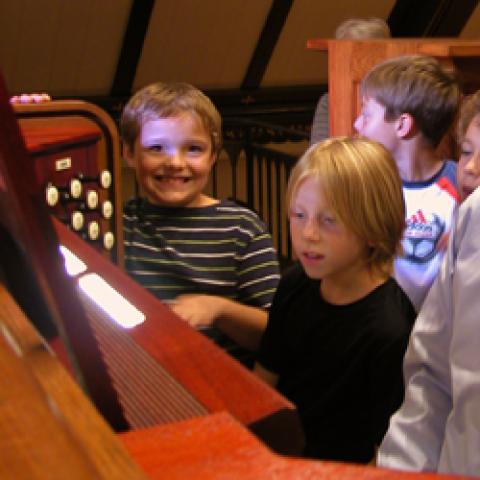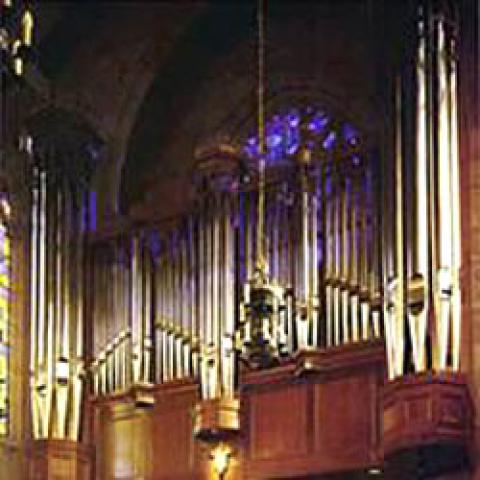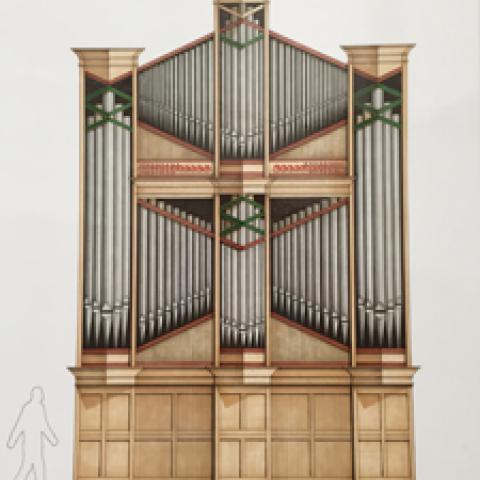
John-Paul Buzard Pipe Organ Builders announces that installation of its Opus 42 organ at St. Bridget Catholic Church, Richmond, Virginia, nears completion. The organ has 32 independent speaking stops and 38 ranks of pipes across three manuals and pedal, and was designed in Buzard’s singular “Classically Symphonic” style.
The organ’s visual design is centered on the church’s neo-Tudor gothic architecture and the recent uncovering of a stained glass window that had been hidden for almost 40 years by the church’s former organ. The Great, shown in the photograph above, is in a case hung over the balcony rail; the Swell, Choir, and Pedal are in twin cases on either side of the window.
The organ was heard in its first official public display for regular Sunday Masses on September 22. Allen Bean is the director of music and organist; Grant Hellmers is the consultant for St. Bridget. The Pastor is Monsignor William A. Carr. The organ’s inaugural recital will be given by Ken Cowan on Friday, November 15 at 7:30 p.m. Ecclesiastical dedication will follow in December.
The Buzard Company’s principals are Executive Vice-President Charles Eames, Tonal Director Brian K. Davis, and Service Director and Sales Associate Keith Williams. This instrument will be featured on the cover of the January 2014 issue The Diapason.
For information: www.buzardorgans.com.





